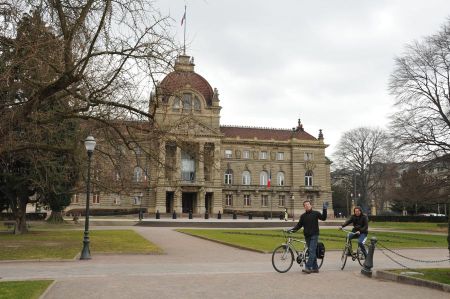Bicycle Trip in Strasbourg and at Notre-Dame Cathedral
- Written by Portal Editor
We started our first day in Strasbourg early. One of us had to go to the bakery to buy croissants and still warm baguette.
Patrick’s house is at a distance of 800 meters from the European Parliament, which is hosted for the European Union negotiations.
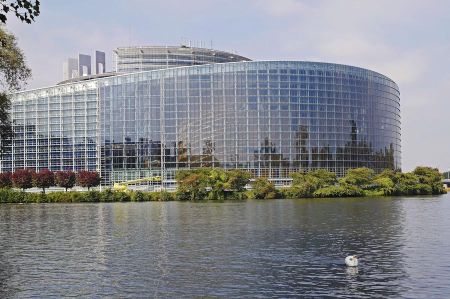 In Patrick’s house, we had a satisfying breakfast with baguettes and croissants that just came out of the oven to our table. Then, we went out for a spin with our bicycles. Under the guidance of Patrick, while we were touring around with bicycles for the first time through the historic old city center of Strasbourg, marvelous bicycle paths of the city attracted our attention.
In Patrick’s house, we had a satisfying breakfast with baguettes and croissants that just came out of the oven to our table. Then, we went out for a spin with our bicycles. Under the guidance of Patrick, while we were touring around with bicycles for the first time through the historic old city center of Strasbourg, marvelous bicycle paths of the city attracted our attention.
Passing by the European Parliament, we headed towards the city center. With the help of markings and signboards that used for bicycle paths in the city, we get used to this amusing and healthy alternative of transportation vehicle quickly.
Notre-Dame Cathedral Square in Strasbourg
Even though the respect of the drivers for the bicycle users and their acceptance of the bicycle path system are seen as a part of development, we can put forward the thesis that it is also related to the geographic structure of the old city. While walking around the streets of the historical city, it is easy to notice the river reaches and water tunnels. Especially, biking along the river or tunnel was imprinted on our minds as a practical and entertaining activity in Strasbourg, which has 400 km bicycle path.
The historical old city of Strasbourg, Grande Île (Grand Island), is an island surrounded by the Ill River, which is one of the branches of the Rhine River. In 1988, Grande Île was listed as UNESCO World Heritage Site and still keeps its place. Notre-Dame Cathedral Square, which is one of the most beautiful squares of Europe, and La Petite France (Little France) neighborhood are the most glamorous visuals of the Grande Île trip.
At the heart of the old city, there is Notre-Dame Cathedral that considered one of the most beautiful examples of early gothic period architecture. Nowadays, it is the 6th highest church of Europe, besides its grandness, with its harmony, elegance and delicacy it erects as the proof of Victor Hugo’s “gigantic and delicate marvel” description.
At 142 meters height, the magnificent Notre-Dame Cathedral was constructed between the years of 1015 and 1439 with the style of Romanesque and Gothic architecture. Since it is a remarkable structure that can be seen from even long distance, it is qualified for the orientation of the ones who do not have a city guide. Hundreds of figures and motifs around the grand structure have a riveting beauty and present almost a visual feast to the visitors. For a while, we could not take our eyes off the figures and until satiated, we looked at the front of the structure made of red sandstones.
Eventually we took leave from the frontal carving and ornamentations, then, made a move to see the inside of the cathedral. The array of bright colors with the light gliding from the stained glass windows, presents captivating view to us. In our opinion; the cathedral, which must be experienced personally with its eye-catching beauty and elusive structure, must be “holy” indeed.
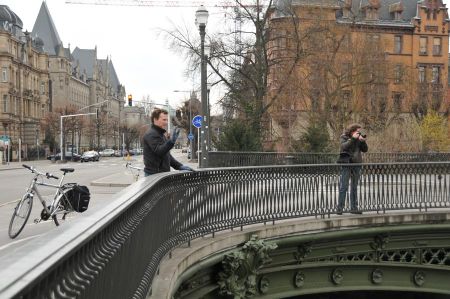 Most of the stained glass windows remain from the 14th century, some of them late 12th century (northern transept of the church) and 13th century (“The Emperor Window” in the northern corridor) and a few of them 20th century (southern transept).
Most of the stained glass windows remain from the 14th century, some of them late 12th century (northern transept of the church) and 13th century (“The Emperor Window” in the northern corridor) and a few of them 20th century (southern transept).
In case you take the chance of climbing the southern tower, there will be 330 stairs you need to go up before reaching the marvelous panoramic view. A great deal of narrow streets, interesting roofs of the historical city, the European Union region, the Vosges Mountains, the Rhine Valley and the Black Forest are among the landscapes of the city that you can see from a wonderful angle by bird’s eye view.
One of the most interesting elements in the cathedral is the sculpture of “Christ on the Mount of Olives” that made as a grave ornament in 1498.
In spite of the existence of a pipe organ remaining from 1260 was mentioned, the oldest parts of the pipe organ in the cathedral were from 1385.
Astronomical clock at the first clock tower
Situated in the south exit of the cathedral, the Astronomical clock is the first clock tower in the world and has three different clocks. The construction of the first clock was started in the 14th century, between the years of 1352 and 1354. The clock, which is also known as “The Three Kings Clock”, had an astrolabe and a calendar. Nowadays, it is presented to the visitors in the Strasbourg Museum of Decorative Arts.
The second and the more assertive clock was designed by mathematician Christian Herlin in the 16th century. Its visual richness of decoration and complexity of astronomic device were the elements that drew attention. Today, many pieces of the clock are shown in the Strasbourg Museum of Decorative Arts.
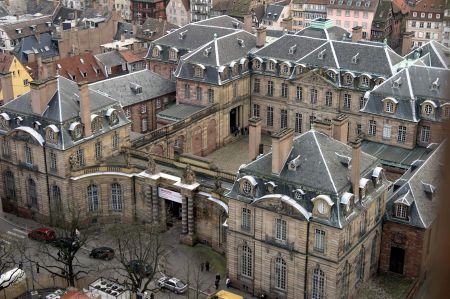 Existing today, the third clock was built by Jean-Baptiste Schwilgué in 1843.
Existing today, the third clock was built by Jean-Baptiste Schwilgué in 1843.
Designing a new mechanism, before starting the construction, he made preparations with 30 workers during a year. Although the visitors are impressed by the extremely well chiseled figurines, the most attractive part of the clock is the mechanism behind.
The clock, which is a work of art and brilliance, shows the movements of the earth, moon and even planets that known until it was built.
Also, it is a calendar that regulated for eternity. Hourly, the figures start to move for a parade.
The Pillar of Angels, which has angel figures, represents the Judgment Day beside the astronomical clock.
The beauty of Strasbourg Notre-Dame Cathedral was the inspiration of many famous men in history. Here are some of them:
Stendhal: "The vault of Strasbourg is one of the most striking monuments I have ever seen".
Goethe: "The more I contemplate the facade of the Cathedral, the more I am convinced of my first impression that its loftiness is linked to its beauty."
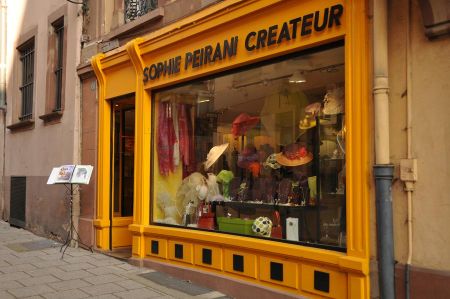 Victor Hugo: "The church portals are beautiful, particularly the Roman portal; there are truly superb figures on horseback, the rose-window is noble and well-cut, the entire front of the church is a clever poem. But the true triumph of this Cathedral is the spire...”.
Victor Hugo: "The church portals are beautiful, particularly the Roman portal; there are truly superb figures on horseback, the rose-window is noble and well-cut, the entire front of the church is a clever poem. But the true triumph of this Cathedral is the spire...”.
Besides of Notre-Dame Cathedral with the picturesque square, it is worth to see the half-timbered houses of splendid German design that belongs to the Middle Ages and the Renaissance Period. The Kammerzell House, which was constructed in 1427, is the most famous of these German designs. It is one of the oldest and characteristic structures of the city and draws attention with its timber ornaments and 70 windows.
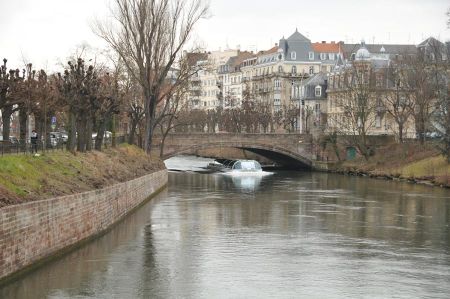 The city, which was one of the most important cities of the Holy Roman German Empire in the Middle Ages, has the intense characteristics of German and French culture. In short, this distinguished city of the Alsace region, Strasbourg still asks itself if it is German or French.
The city, which was one of the most important cities of the Holy Roman German Empire in the Middle Ages, has the intense characteristics of German and French culture. In short, this distinguished city of the Alsace region, Strasbourg still asks itself if it is German or French.
The Rohan Palace is located near the tunnel and it is quite close to the square. The palace, which was the center of the Rohan Cardinals at one time, today contains three of nine museums in Strasbourg within itself. These museums are; The Archaeological Museum, The Museum of Decorative Arts and The Museum of Fine Arts.
Discover Strasbourg by bike – Your first exploration on two wheels - some more details
Why Strasbourg is perfect for cycling
Strasbourg is not only a beautiful city, but also a true paradise for cyclists. The paths are flat, the transport network is well-thought-out, and there's hardly a better way to explore this charming border town than on two wheels.
Compact, charming, and bike-friendly
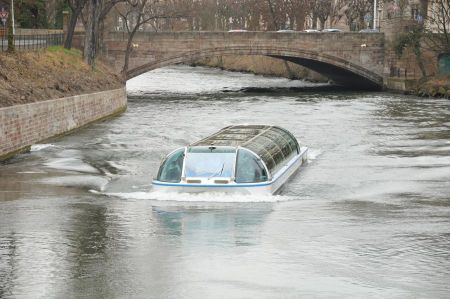 Strasbourg is manageable, the sights are close together, and cyclists enjoy priority here. It's almost as if the city was designed specifically for cycling.
Strasbourg is manageable, the sights are close together, and cyclists enjoy priority here. It's almost as if the city was designed specifically for cycling.
Between France and Germany – Two cultures on one saddle
The city combines French ease with German order – and you can feel this on the bike paths. Everything is well signposted, yet still full of joie de vivre.
Preparation is everything – Tips before you start
Where can you get a bike in Strasbourg?
If you don't have your own bike, you can simply use the Vélhop system – Strasbourg's municipal bike rental system with many stations in the city centre.
What should you bring?
A small lock, a water bottle, sunscreen, and maybe a raincoat – the weather can change quickly!
The first route – A relaxed start to the adventure
From the train station towards the old town
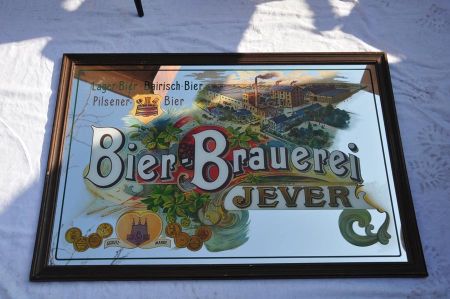 Start at the Gare de Strasbourg and cycle towards the old town – less than ten minutes later, you'll be in the middle of the action.
Start at the Gare de Strasbourg and cycle towards the old town – less than ten minutes later, you'll be in the middle of the action.
First stops to marvel
The first impressions are guaranteed: winding alleys, canals, and half-timbered houses. Every curve here feels like a postcard.
The old town – Petite France and historic streets
Cobblestones, half-timbered houses, and the scent of croissants
Cycling in Petite France is like riding through a fairytale. The smell of fresh pastries fills the air, and the colourful houses are reflected in the water.
The charm of "La Petite France" on two wheels
You should definitely get off and push your bike here more often – not because of the effort, but because it's simply too beautiful.
Strasbourg Cathedral – A Stop with a Wow Factor
Impressive Gothic Architecture
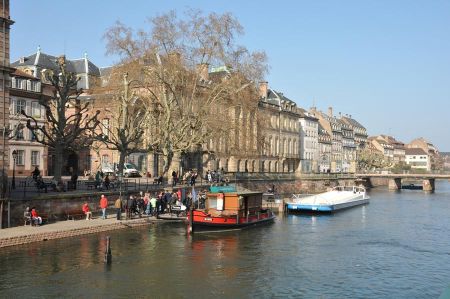 Strasbourg Cathedral is a real highlight. You'll be there in seconds by bike – and the view will take your breath away.
Strasbourg Cathedral is a real highlight. You'll be there in seconds by bike – and the view will take your breath away.
Short Break at Cathedral Square
Grab an ice cream or a coffee and enjoy the hustle and bustle in the square.
Along the Ill River – Relaxed Cycling with a View
Green Banks, Bridges, and Birdsong
Follow the river and discover Strasbourg's quieter side. Here you can breathe deeply and let yourself drift – literally.
Photo Opportunities Guaranteed
The reflections of the old town houses in the water? A dream for every Instagram profile.
From the River to the European Quarter
Political Centre and Modern Architecture
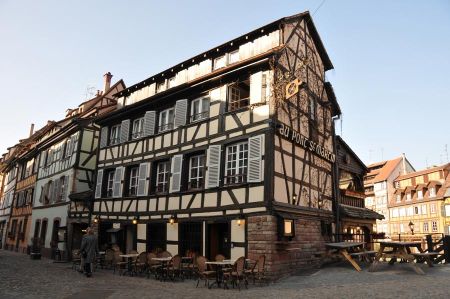 Continue northeast – past the European Parliament and other EU institutions. A contrast to the old town, but just as impressive.
Continue northeast – past the European Parliament and other EU institutions. A contrast to the old town, but just as impressive.
Between the European Parliament and the Orangery
Here, Strasbourg shows its modern side – and at the same time very green.
Picnic in the Park – A Well-Deserved Break
The Orangery – Strasbourg's Green Oasis
The perfect place to relax after a tour. Spread out a blanket, unpack a snack – and simply unwind.
Relax, enjoy, and plan further
From here, you can make new plans – perhaps a trip to Kehl or a visit to the Botanical Garden?
Culinary Stops
Flammkuchen, baguettes, and more.
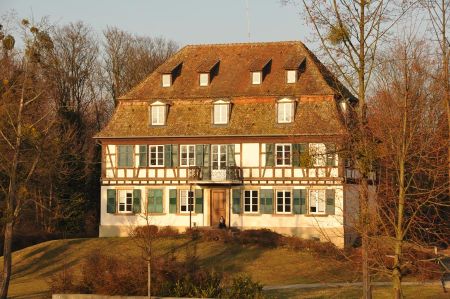 Of course, enjoyment shouldn't be neglected. Look out for small bakeries or sidewalk cafés with outdoor seating.
Of course, enjoyment shouldn't be neglected. Look out for small bakeries or sidewalk cafés with outdoor seating.
Tips for Small Cafés with Bike Parking
Especially in the Old Town, you'll find many places where you can relax and keep an eye on your bike.
Cycling Infrastructure in Strasbourg
Cycle Paths, Signs, and Traffic Rules
Strasbourg is well-equipped with wide cycle paths, clear signage, and plenty of consideration in traffic. Vélhop – The Smart Rental System
With Vélhop, you can rent, exchange, or return bikes flexibly – perfect for spontaneous tours.
Cycling Safety
Is a helmet mandatory?
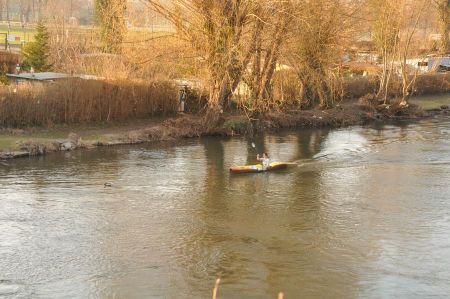 It's not mandatory, but a helmet is recommended – especially when traveling outside the city centre.
It's not mandatory, but a helmet is recommended – especially when traveling outside the city centre.
How to stay safe in the old town
Ride slowly, watch out for pedestrians, and use the push-along sections if necessary – it's all easy!
More Tour Ideas for Advanced Riders
From the city centre to Kehl via the Rhine Bridge
The route is beautiful – and you can easily commute between two countries.
Rural Routes Through Alsace
If you want to see more, you can venture into the countryside – past vineyards, half-timbered villages, and charming gîtes.
Why cycling in Strasbourg is more than just transportation
Sustainable, flexible, and full of experiences
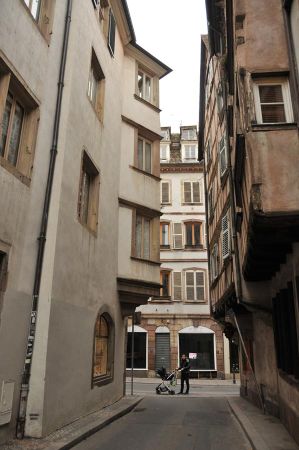 You set your own pace, take breaks wherever you want, and discover things you'd never have seen by car or tram.
You set your own pace, take breaks wherever you want, and discover things you'd never have seen by car or tram.
Slowing down meets discovery
Cycling is more than exercise – it's a feeling of freedom.
Conclusion – Strasbourg by bike: The perfect start for explorers
Exploring Strasbourg by bike is like a little adventure: exciting, refreshing, and full of surprises. Not only do you get from A to B quickly – you feel like you're in the middle of a city that combines history, culture, and nature. And the best part? You can repeat it anytime.
❓ FAQs about the Strasbourg bike tour
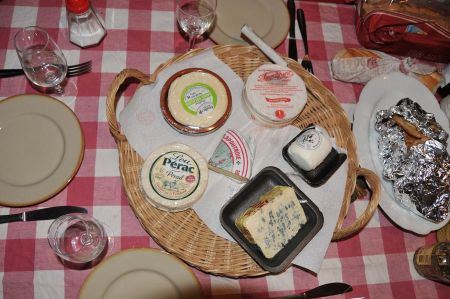 1. Do I need my own bike for the tour?
1. Do I need my own bike for the tour?
No, you can easily rent one through the Vélhop system.
2. Are there guided bike tours through Strasbourg?
Yes, many guided tours are offered – including themed ones, such as culinary or historical.
3. Can I park my bike in the old town?
Of course! There are plenty of parking options, especially around the cathedral and in larger squares.
4. How much time should I plan for the tour?
For a first exploration, 3–4 hours are perfectly adequate – with breaks, of course.
5. Is cycling safe in Strasbourg?
Yes, the city is very bike-friendly and designed for cyclists – with well-signposted paths and plenty of consideration in traffic.
Please read as well:
Koman Lake and Dam - More impressions about the ferry trip
Cultural Monument Wiener Riesenrad at Prater
-
 The Pillar of Angels
The Pillar of Angels
The Pillar of Angels
The Pillar of Angels
-
 Notre-Dame Cathedral
Notre-Dame Cathedral
Notre-Dame Cathedral
Notre-Dame Cathedral
-
 Mount Olive
Mount Olive
Mount Olive
Mount Olive
-
 Notre-Dame Cathedral Square
Notre-Dame Cathedral Square
Notre-Dame Cathedral Square
Notre-Dame Cathedral Square
-
 The Kammerzell House
The Kammerzell House
The Kammerzell House
The Kammerzell House
-
 The Rohan Palace
The Rohan Palace
The Rohan Palace
The Rohan Palace
https://www.alaturka.info/en/france/2483-the-heart-of-strasbourg-and-notre-dame-cathedral#sigProId9de2a70b50
